In any home you can find several dozen textiles. But even the highest quality linen, even excellent clothes, needs to be ironed periodically. Knowing the features of this work avoids many problems and saves time.
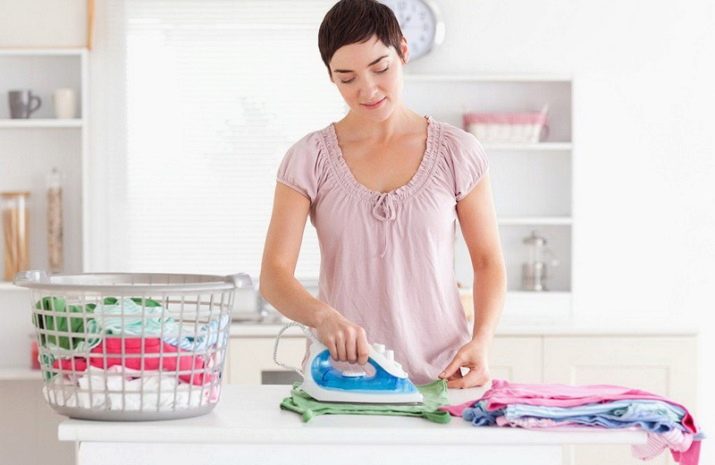
Ironing Methods
The oldest type of ironing (not losing relevance) is a dry technique. It is quite fast, can be applied to various things from the inside out and from the face. Many people, however, prefer to iron fabrics with moisture. You can add water in several ways:
- manually wetting the surface;
- spraying from a spray gun;
- wrapping in a damp cloth;
- wet gauze overlay.
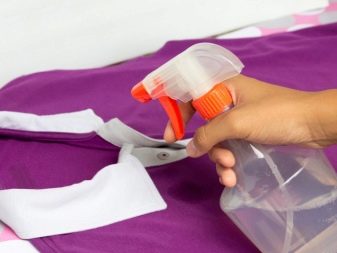

A more modern approach is steaming. It is possible only if the iron has a corresponding function. You can also use a steamer. But it is important to understand that you can’t steam off any matter that shrinks. It is necessary to carefully check whether such processing is acceptable for the selected product.
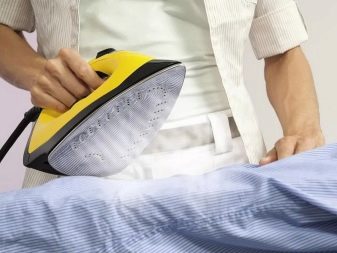

The vertical steamer, unlike the iron, provides ironing even of voluminous products, eliminating the appearance of wrinkles. Such a device is recommended for:
- jackets;
- jackets;
- lush outerwear;
- refreshment of clothes without pre-washing.

But we must also remember the weaknesses. So, the steamer is not suitable for ironing in a horizontal plane. He can not cope with the seams. If these problems are not relevant, the steamer will significantly save time compared to the iron. A more advanced option is a steam generator. It combines the advantages of an iron and a steamer, and large dimensions can become the only problem.
In some situations, you have to iron without any special tools. Then use such tricks:
- hanging over a hot bath for 30 minutes and drying in another room;
- steaming from the kettle;
- ironing with a steel mug or a stewpan with an even clean bottom.

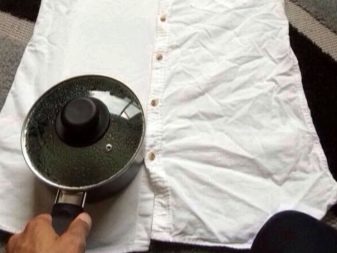
Different types of fabrics
But nevertheless, “extreme” ironing methods are used only occasionally, by special necessity. Most often, iron is used in everyday life - and it must be used in a special way, depending on the matter to be processed. Chiffon and silk are ironed at 70 or 80 degrees. Less heat will not work, and if you increase the temperature, you can ruin the thing.

Note: with the same warming, it is necessary to process nylon (without ironing in the proper sense of the word, using "steam boost").
A higher temperature - from 100 to 120 degrees - will be required for wool mixture and wool. Such types of matter are best treated with irons with special nozzles on the soles. These tips are much more effective than the old-fashioned gauze lining. It is possible to smooth wool with such a device without a characteristic unpleasant shine. You can also use a steamer (in accordance with the instructions).
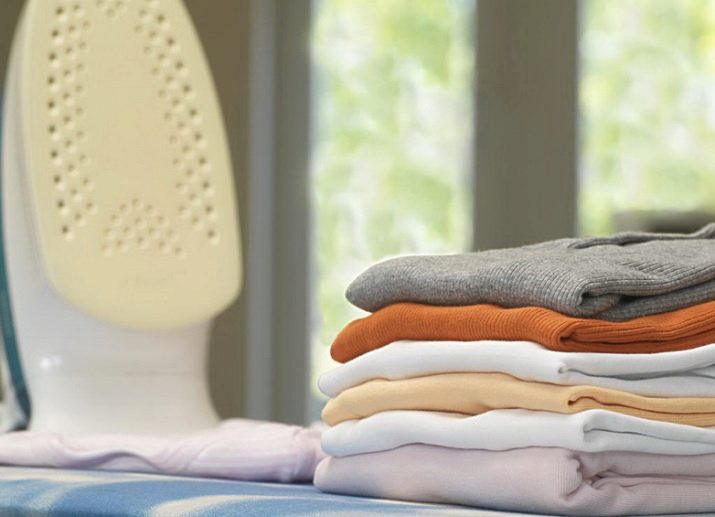
Flax and cotton are recommended to be processed at 150-180 degrees. To obtain an optimal result, thoroughly moisten the fabric. Therefore, it is recommended to use irons that can spray water. Steaming linen or linen is advisable until the end of ironing. Coarse jeans are ironed with significant heating (180-200 degrees), since more gentle modes are not effective enough.
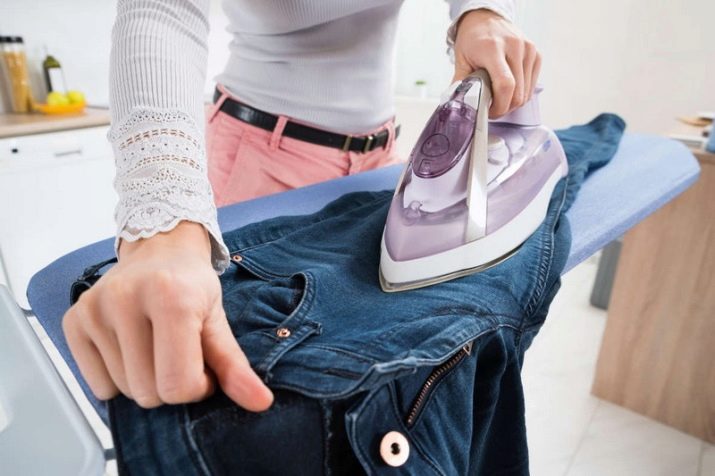
A more accurate approach is needed for lining materials - satin and silk. They are ironed strictly from the inside out. Attention: in this case even the slightest humidification is not allowed. Not only can not be moistened; it is necessary to protect matter from small drops of water. Therefore, for regular ironing of silk and satin clothes, it is advisable to take an iron with the anti-drop function.
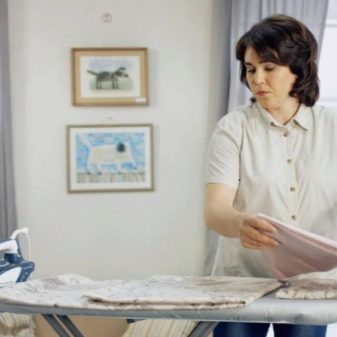
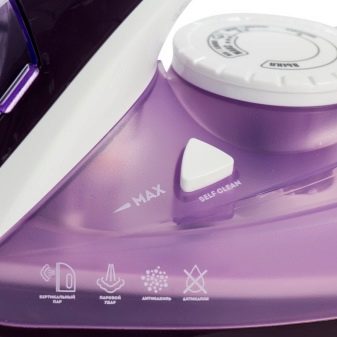
Synthetics, unlike the disassembled options, may well be moistened. But there are other requirements: a ceramic sole and an antistatic effect. Viscose can be considered an exception - like silk, it is ironed only in an anhydrous mode. All things from chintz from the inside are not ironed. The iron should touch only the front side, it is advisable to moisten clothes for better effect.
Velvet and plush products are put in order only on the reverse side.

Instead of ironing, you can simply hold the fabric with the fibers down over the steam. Terry cloth cannot be ironed in principle. Violation of this rule can make things tough and uncomfortable in everyday life. When working with knitwear, you should not rush, it is imperative that the ironed products are allowed to cool before being put back into the cabinet.
How to iron different things?
Knowing the rules for handling various tissues is very helpful. But it must be borne in mind that ironing of every kind of thing, even made of the same matter, is made according to special rules. Despite the complexity of ironing bed linen, it brings significant benefits. And it's not just aesthetics: the ironed sheet or pillowcase wears out less and is more comfortable.
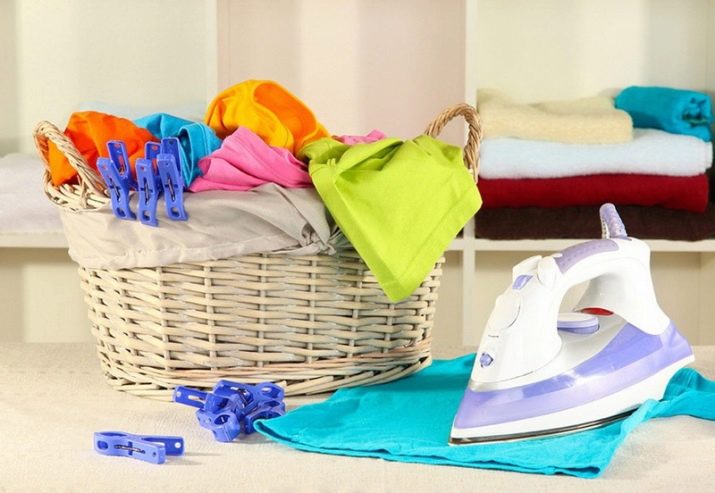
Note: if the washing machine has a special mode, additional manual processing is not required.
There are several recommendations that allow you to properly iron the sheets after washing. First you need to check for any stains. It is advisable to process all parts of the sleeping sets from the wrong side. To drive an iron on the front side is necessary only with very serious wrinkles. In order not to damage the applications, impose protective nets.
It is necessary to lead the iron strictly along the seam, from its beginning to the end. It is easiest to smooth out bedding, moving along the transverse and lobar fibers. This technique also helps prevent damage to products. Before work, spray things with a spray bottle. Wait 5 or 10 minutes to absorb moisture.
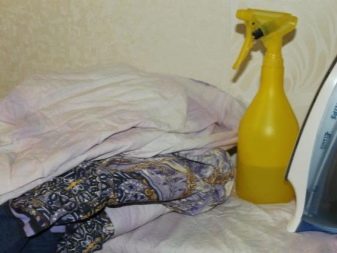
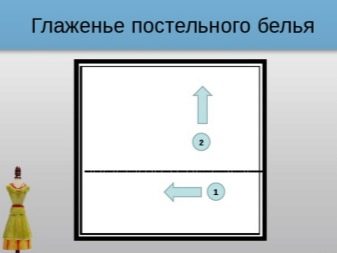
Ironing of various types of clothes has its own characteristics.So, before processing the blouse, you need to check whether the sole is clean. If there is the slightest dirt, you cannot rush - you must first clean everything. A special pencil is used for cleaning. Of the substitutes available, baking soda is suitable.
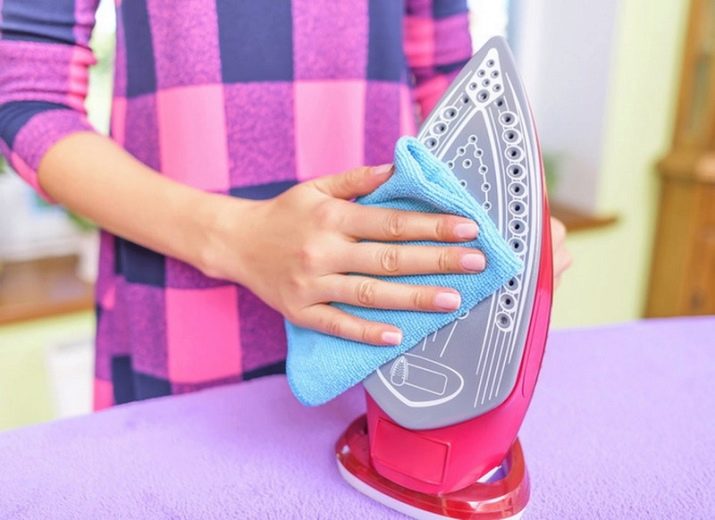
Important: only clean blouses are ironed, otherwise they will only get dirty even more. Unfasten any button in advance, even located on the cuff.
You need to iron in this order:
- inside out collar;
- front part of the collar;
- the inside of the cuffs;
- front part of cuffs;
- yoke;
- sleeve;
- seamless part;
- all that's left.
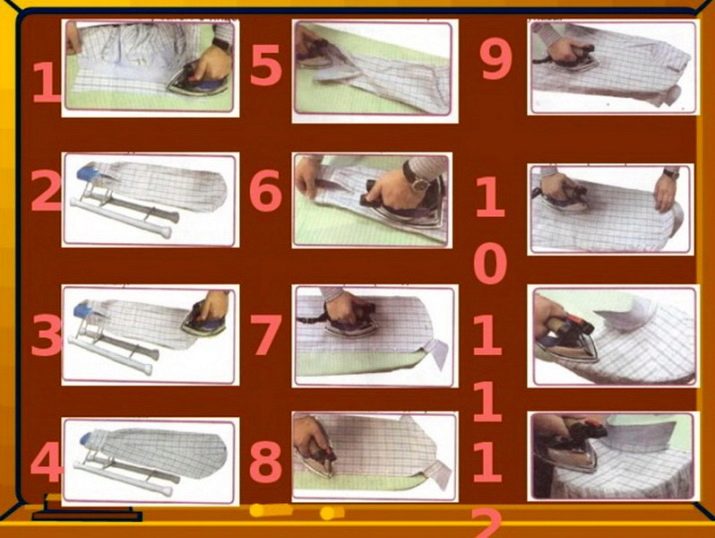
Often, when preparing for the wedding, it becomes necessary to iron not only a blouse, but also a veil. It is necessary to approach this work even more accurately and thoroughly than to ironing everyday clothes. They begin, as always, with the study of shortcuts. The iron is placed on minimal heat. Only tulle products are processed at 120 degrees. But it is also desirable to iron them at a lower temperature.

On top of the product put:
- special fabric;
- thick paper;
- dry gauze cloth (optional).
The most difficult thing is to put in order the places where there are flowers, beads and other decor. Such areas are covered with towels in advance. Start work without steam. Continuously eliminate all appearing creases. If wrinkles still remain on the veil ironed in this way, then you will have to use the steaming mode.
A more correct approach is the use of a steam generator. He will tidy up the veil placed on the hanger and make it much safer than the iron. Some people replace steamers and steam generators with hair dryers. These devices include medium-intensity blowing. Pre-sprayed with water, then dried from the gate to the bottom line.

But no matter how important the wedding veil is, at home you often have to iron other wardrobe items. For example, a medical cap and dressing gown (or their cook counterparts). For work, it is recommended to use ironing boards, after evaluating their cleanliness and reliability. When it is impossible to apply a board, caps are laid out on a flat surface, most often on a table. You can iron the uniform only with a clean iron, which is warmed up to the required temperature.
For moistening and steaming caps, bathrobes, use only filtered or distilled water. Ironing dirty clothes is not allowed. All inserts of bathrobes, which from the water can be covered with stains, are ironed only without steam. It is recommended to turn the dressing gowns and caps on the wrong side. The upper, side and lower seams are sequentially ironed.
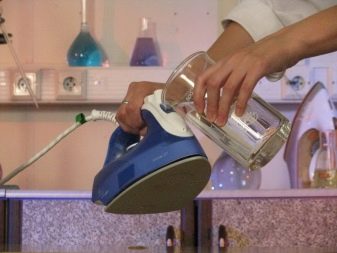
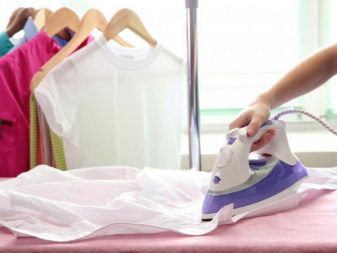
Stretching fabric is not recommended. It can tear easily. It is advisable to pull the seams on one side, firmly fixing them on the other side. Only after ironing the seams, it is necessary to work with tucks. The slightest arrows are unacceptable.
The cap is ironed a little differently than the cap. It is necessary to apply the classic army method:
- turn upside down a three-liter glass jar;
- wrap a towel on it;
- put on a hat;
- lead him to perfect condition.
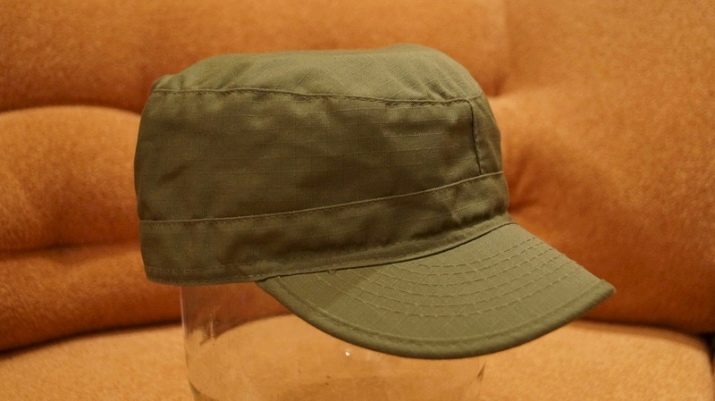
There are also simple tricks that allow you to quickly smooth out a polo shirt. T-shirt must be straightened. The collar is laid as needed. The clothes turned on the back are folded along, then smoothed, trying to eliminate the slightest crease. Turn the t-shirt over twice (alternately stroking the front and back), then turn it inside out and check all the folds again.
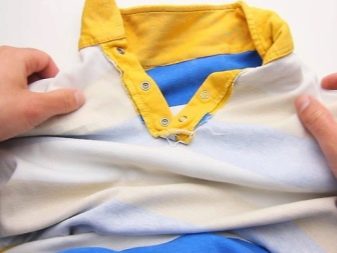

Useful Tips
No matter what textiles you have to iron, no matter what fabric it is made of, there are a number of subtleties that must be taken into account. Steaming is resorted to when it is necessary to smooth out a dried fabric or wardrobe item that should not touch a hot sole. You need to work only in a convenient, bright and dry place, where there is a solid surface of the required size.It is advisable to decide in advance where the ironed things will be stored - they must remain clean and not wrinkle additionally.
Before starting ironing, you need to make sure the reliability of the iron itself, wires, plugs and sockets. Do not touch the wire with a heated sole. The iron is taken only with dry hands. Ideally, you should stand on a rubber mat and not take the iron handle while touching another metal object.
In addition to strict adherence to safety rules, it is useful to learn how to iron with starch. Such processing is unacceptable for wool and artificial fiber products.
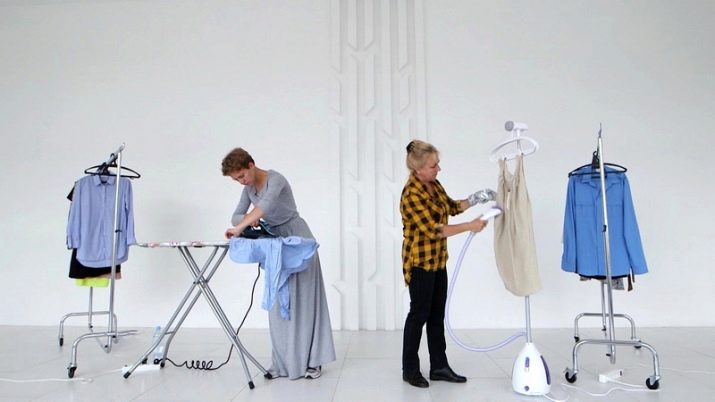
Important: starched dark clothes from any fabric may look ugly. It is undesirable to starch children's clothing and wardrobe items used in the summer, or covered with embroidery floss. It is possible to process with the help of starch only clean clothes. The amount of powder used is selected individually, depending on what rigidity they want to achieve.
An important role in the work is played by a competent choice of ironing cloth. But it is also necessary to cover it with a protective heat-resistant coating that will withstand prolonged use. Cloths for ironing are easily fixed on tables with the help of special fasteners. Removing them later is also not difficult. The fabric is easy to erase, unlike ordinary fabric.
But if there is no such material, you can put an ordinary blanket on the board as a litter. The main thing is that its material withstands prolonged heating.
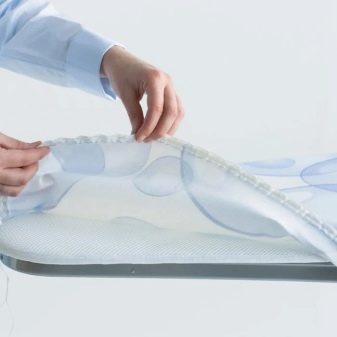
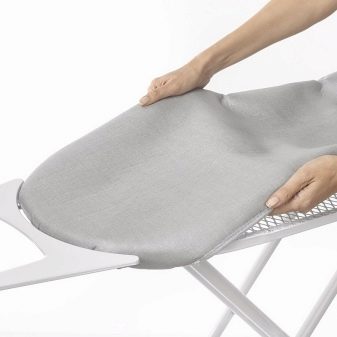
When selecting the fabric or preparing the bedspread, only the surface for the ironing itself should be taken into account. The place where the iron itself will be placed can be ignored. It is useful to use special coatings with reflective surfaces.
See how to iron clothes correctly in the next video.










